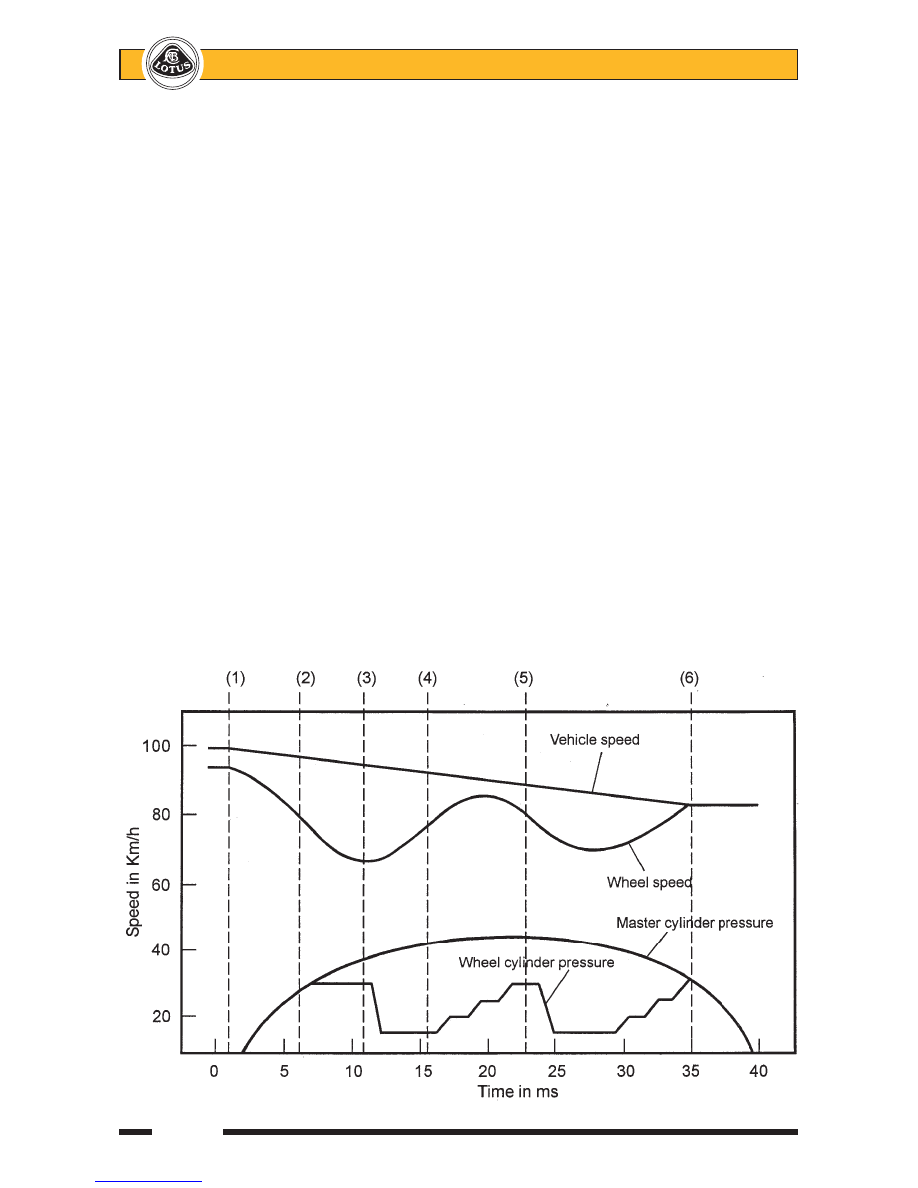Lotus Elise / Lotus Exige. Instruction - part 60

Lotus Service Notes Section JJ
Page 22
Anti-Lock Braking
Maximum braking force is provided from a tyre when there is around 15% slippage, dependent on road
surface conditions and tyre characteristics. The function of the ABS is to limit tyre slippage when braking to
around this figure in order to provide optimum grip, and also, by preventing wheel lock, to ensure that steering
control of the vehicle is retained.
A high brake pedal pressure (or low road surface friction) may initiate the locking of one or more wheels.
In the diagram below, a typical control strategy is shown:
1.
Normal braking occurs until, as the applied pressure increases, the wheel speed signals received by the
ECM indicate that the left hand front wheel (for example) is tending to lock. i.e. its deceleration is too
rapid, with too great a speed differential with the other wheels.
2.
The connection between the master cylinder and the LH front brake circuit is interrupted (by the isolation
valve), and the rate of slip increase is reduced.
3.
If the wheel speed continues to depart significantly from vehicle speed, the dump valve is energised to
reduce pressure in the LH front circuit until wheel speed begins to increase. The dump valve is then
closed, as is the isolation valve.
4.
As wheel speed approaches that providing optimum grip, the isolation valve is pulsed open to allow a
stepped pressure increase.
5.
As wheel speed begins to drop off and depart from vehicle speed again, a new cycle starts, repeating
steps (1) to (4).
6.
When wheel speed increases sufficiently to meet vehicle speed, ABS intervention ceases, although
monitoring is continued throughout each braking event.